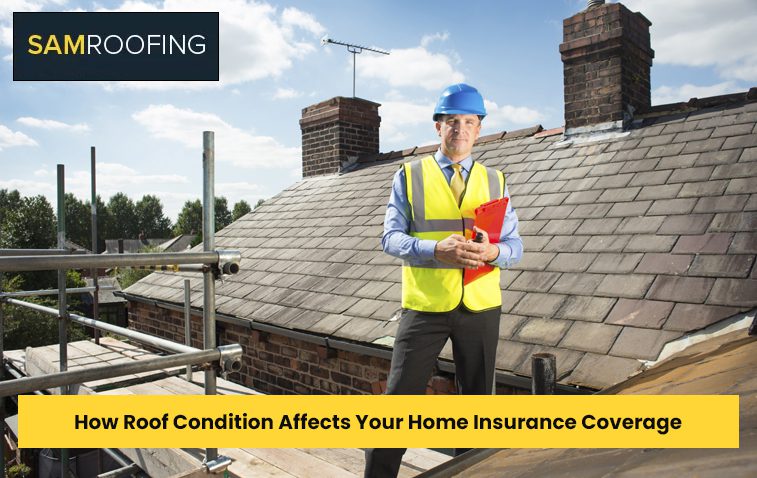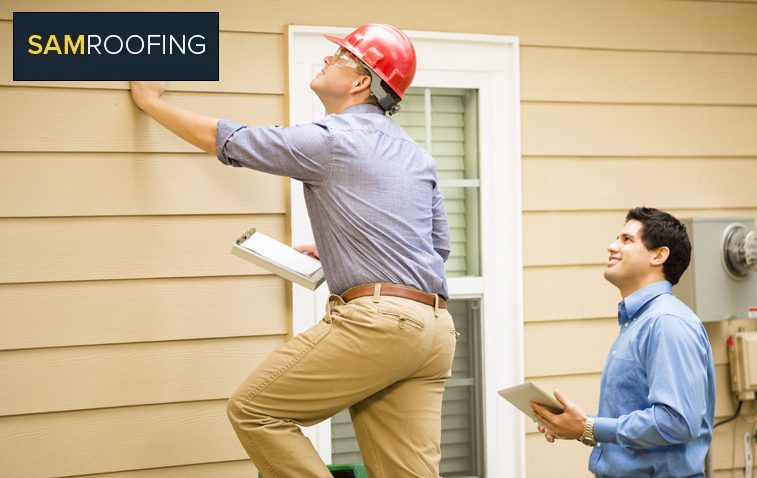How Roof Condition Affects Your Home Insurance Coverage
The importance of a home’s roof is more than we realize. A strong and safe roof not only protects the house from the vagaries of weather, but also impacts your home insurance. If the roof is in good condition, the insurance company is able to offer you better coverage and affordable premiums. But if the roof is in poor condition, it can lead to problems in getting insurance and the premium can also be high.
Insurance companies assess risk based on the condition of your roof. Therefore, roof maintenance is not only important for the safety of your home, but it also has a direct impact on your insurance policy. By maintaining the roof from time to time, you can avoid many major problems and your insurance claim can also be passed easily. Let’s know how the condition of the roof affects your insurance and what steps can be taken to maintain it better.

Impact on premium cost
A roof maintained in good condition can reduce your insurance premium. Insurance companies usually give lower premiums to homes that have good and safe roofs. If the roof is strong and well-maintained, the insurance company believes that your home is less likely to suffer damage.
Example
If the roof of a home has recently been replaced and weather-resistant material has been used, the insurance company may charge a lower premium from the owner. On the other hand, if the roof is old and worn out, the premium may increase significantly because the risk also increases. Also, if your roof has received a certificate of regular inspection and repair, it helps show the insurance company that you are taking care of your home, which can give you further discounts in premium.
Eligibility for insurance coverage
The condition of the roof plays an important role in getting insurance. Insurance companies often take into account the age and condition of the roof. If your roof is very old or has not been properly maintained, the insurance company may refuse you coverage or provide limited coverage.
Effect of age of the roof
Often roofs older than 20 years are not covered in insurance policies or have limited coverage. Therefore, it is important that if your roof is getting old, you get it replaced or repaired in time to maintain your insurance eligibility. Apart from this, many insurance companies also determine coverage based on the material of the roof. If durable and long-lasting material has been used in your roof, then your eligibility for insurance coverage may be better.
Effect on the claim process
Poor condition of the roof can affect the insurance claim process. If your roof is already in poor condition and further damage occurs due to an accident or natural disaster, the insurance company may reject the claim. This is because insurance companies may believe that the damage was already happening.
Common problems
If there is a leak in the roof and it has not been repaired beforehand, the insurance company may refuse to pay compensation on claim. Therefore, it is important to regularly inspect and repair the roof so that you do not face any problem while making a claim. Also, if the roof has been repaired, submit a complete report of it to the insurance company so that there is no problem in the claim process.
Age of the roof and depreciation
Insurance companies also take into account the depreciation of the roof along with its age. As your roof gets older, its value decreases and the insurance company can reduce your claim amount accordingly.
How to manage
If your roof is getting older, keep getting it repaired from time to time and get it replaced as needed. This will reduce the depreciation of your roof while making an insurance claim and you will get proper compensation. Another way to manage the age and depreciation of the roof is to choose better options keeping in mind the roof material. Some materials are durable for a longer period of time and their depreciation is slow, which can benefit insurance coverage.
Response during a natural disaster
The condition of your roof affects the insurance company’s response after a natural disaster. If your roof was in good condition beforehand, the insurance company can quickly start the compensation process. But if the roof was bad and then it was damaged, the insurance company may delay or reduce your compensation.
Examples from recent events
Many homes had roofs damaged in recent storms. Owners of homes whose roofs were in good condition beforehand received quick and full compensation from insurance. While those whose roofs were already bad had difficulties in getting compensation. Also, if your roof used materials specially designed for natural disasters, this can improve your insurance terms and make the insurance company’s response positive.
Inspection and certification
Insurance companies recommend professional inspection to assess the condition of the roof. Professional inspection determines whether your roof meets insurance standards. Insurance companies can provide you better coverage if you get certification.
Benefits of certification
If your roof is certified to be in good condition, it can improve your insurance terms. This can lead to insurance companies providing you lower premiums or more coverage. Regular inspection and certification can help you ensure the safety of the roof from time to time and present the certificate while making an insurance claim, which eases the claim process and gives you better compensation.

Preventive and maintenance measures
Regular roof care and repair not only keeps your home safe, but also benefits your insurance policy. Fixing small problems in time can help you avoid bigger problems and make the insurance claim process easier.
Maintenance tips
Clean the dirt accumulated on the roof from time to time and repair cracks or leakages immediately. Also ensure that water does not accumulate on the roof and there is proper drainage during rains. Small measures like these can keep your roof in good condition. Also, do an extra check of the roof during seasonal changes so that any potential damage can be remedied in time.
Upgrades and improvements
If you are thinking of upgrading your roof, it can have a positive impact on your insurance. Roofs made of new and better materials are less risky for insurance companies, allowing you to benefit from a reduction in premium and an increase in coverage.
Choose materials and designs
When upgrading your roof, choose weather-resistant materials that have a long life. This will not only make your roof stronger but will also give insurance companies confidence that your home is safe, which can lead to better insurance terms. Choosing better materials and designs helps protect your roof from natural disasters, allowing insurance companies to give you priority.
The condition of your roof has a direct impact on your home insurance. A strong, well-maintained roof not only keeps your home safe, but also improves your insurance terms. Regular roof care, repairs, and periodic inspections increase the life of your roof and reduce problems at the time of insurance claim. This way you can keep your home safe and enjoy better insurance terms.